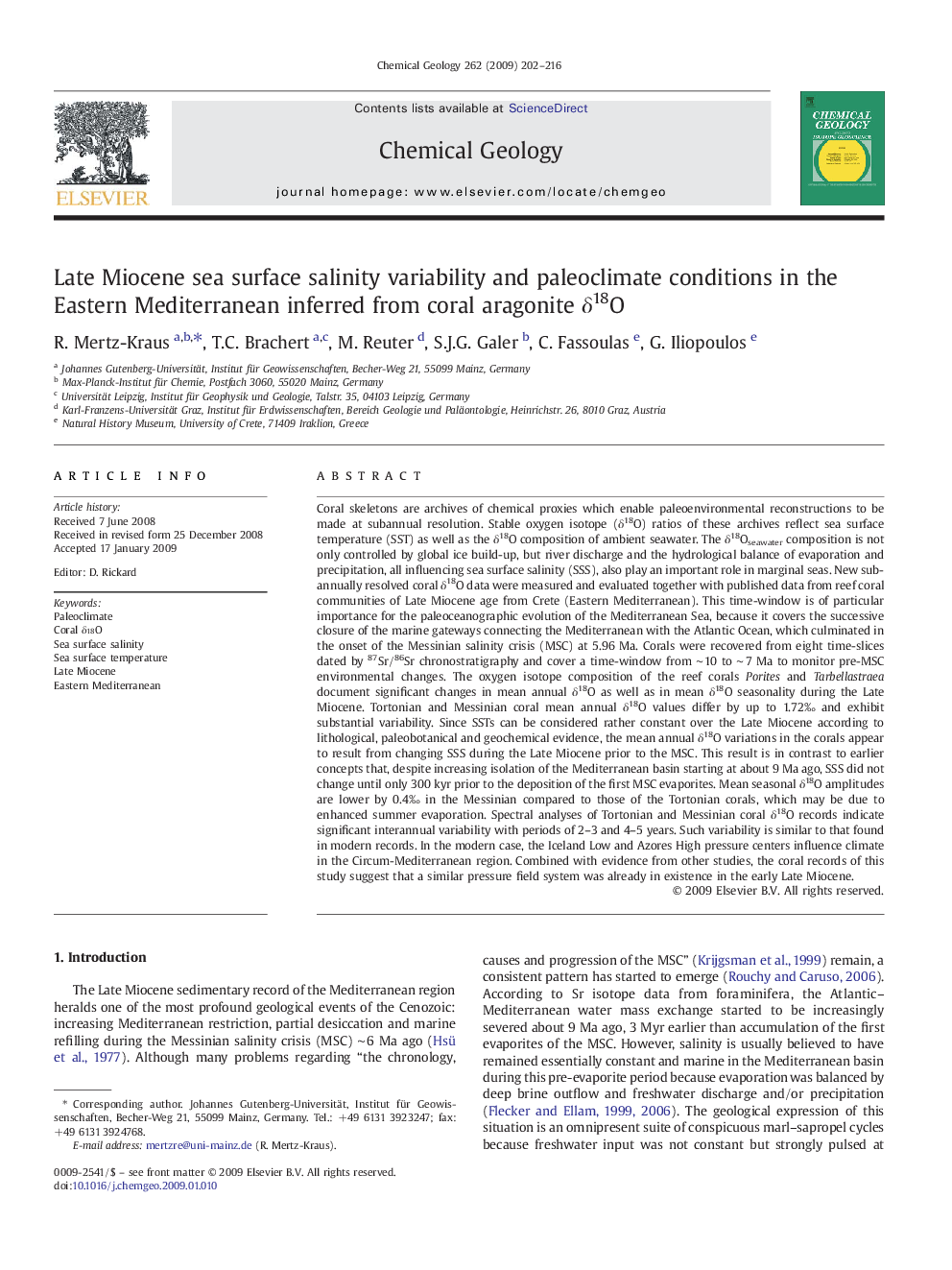| کد مقاله | کد نشریه | سال انتشار | مقاله انگلیسی | نسخه تمام متن |
|---|---|---|---|---|
| 4700362 | 1637707 | 2009 | 15 صفحه PDF | دانلود رایگان |

Coral skeletons are archives of chemical proxies which enable paleoenvironmental reconstructions to be made at subannual resolution. Stable oxygen isotope (δ18O) ratios of these archives reflect sea surface temperature (SST) as well as the δ18O composition of ambient seawater. The δ18Oseawater composition is not only controlled by global ice build-up, but river discharge and the hydrological balance of evaporation and precipitation, all influencing sea surface salinity (SSS), also play an important role in marginal seas. New sub-annually resolved coral δ18O data were measured and evaluated together with published data from reef coral communities of Late Miocene age from Crete (Eastern Mediterranean). This time-window is of particular importance for the paleoceanographic evolution of the Mediterranean Sea, because it covers the successive closure of the marine gateways connecting the Mediterranean with the Atlantic Ocean, which culminated in the onset of the Messinian salinity crisis (MSC) at 5.96 Ma. Corals were recovered from eight time-slices dated by 87Sr/86Sr chronostratigraphy and cover a time-window from ∼ 10 to ∼ 7 Ma to monitor pre-MSC environmental changes. The oxygen isotope composition of the reef corals Porites and Tarbellastraea document significant changes in mean annual δ18O as well as in mean δ18O seasonality during the Late Miocene. Tortonian and Messinian coral mean annual δ18O values differ by up to 1.72‰ and exhibit substantial variability. Since SSTs can be considered rather constant over the Late Miocene according to lithological, paleobotanical and geochemical evidence, the mean annual δ18O variations in the corals appear to result from changing SSS during the Late Miocene prior to the MSC. This result is in contrast to earlier concepts that, despite increasing isolation of the Mediterranean basin starting at about 9 Ma ago, SSS did not change until only 300 kyr prior to the deposition of the first MSC evaporites. Mean seasonal δ18O amplitudes are lower by 0.4‰ in the Messinian compared to those of the Tortonian corals, which may be due to enhanced summer evaporation. Spectral analyses of Tortonian and Messinian coral δ18O records indicate significant interannual variability with periods of 2–3 and 4–5 years. Such variability is similar to that found in modern records. In the modern case, the Iceland Low and Azores High pressure centers influence climate in the Circum-Mediterranean region. Combined with evidence from other studies, the coral records of this study suggest that a similar pressure field system was already in existence in the early Late Miocene.
Journal: Chemical Geology - Volume 262, Issues 3–4, 30 May 2009, Pages 202–216